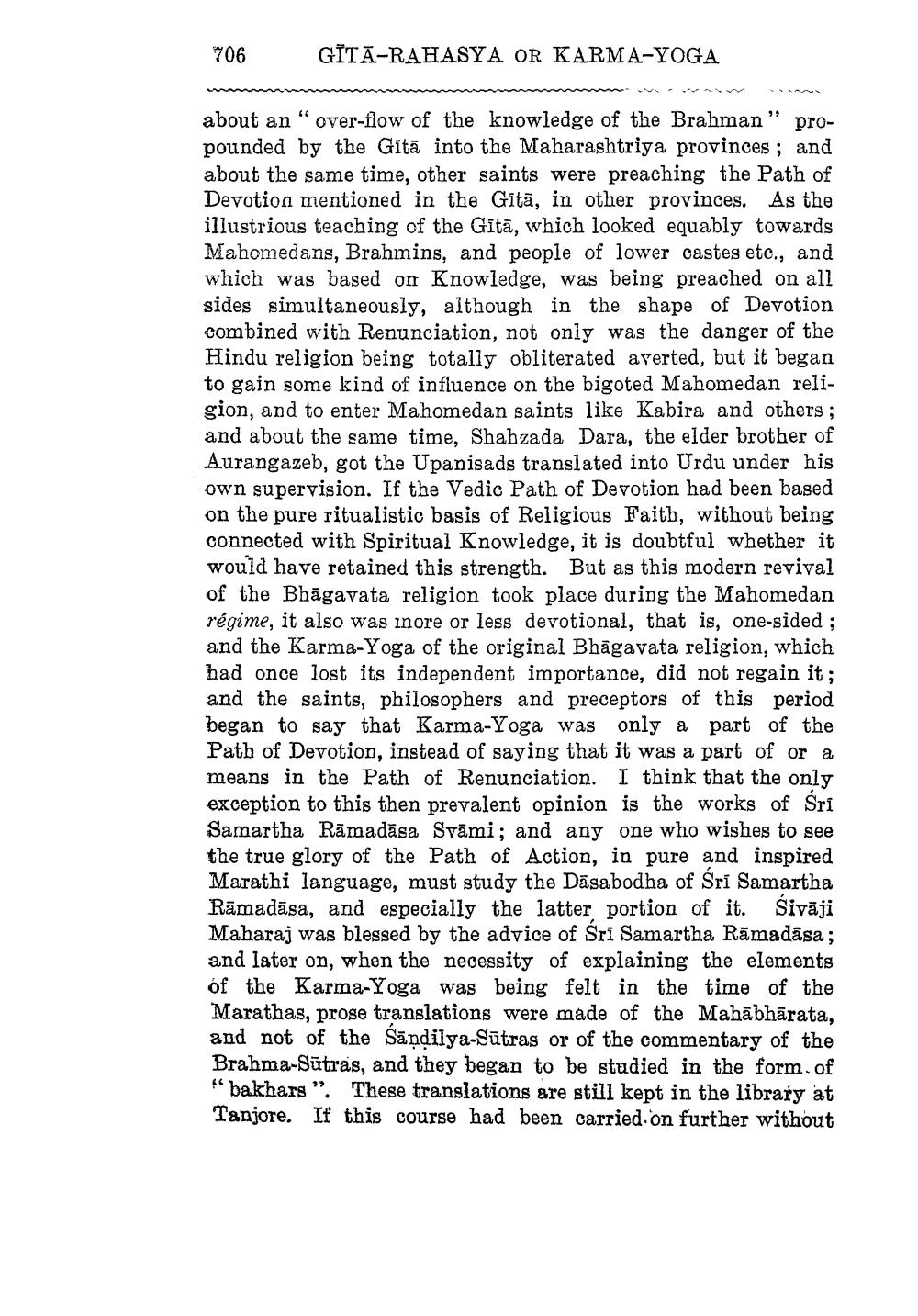________________
706
GĪTĀ-RAHASYA OR KARMA-YOGA
about an "over-flow of the knowledge of the Brahman" propounded by the Gītā into the Maharashtriya provinces; and about the same time, other saints were preaching the Path of Devotion mentioned in the Gitā, in other provinces. As the illustrious teaching of the Gītā, which looked equably towards Mahomedans, Brahmins, and people of lower castes etc., and which was based on Knowledge, was being preached on all sides simultaneously, although in the shape of Devotion combined with Renunciation, not only was the danger of the Hindu religion being totally obliterated averted, but it began to gain some kind of influence on the bigoted Mahomedan religion, and to enter Mahomedan saints like Kabira and others; and about the same time, Shahzada Dara, the elder brother of Aurangazeb, got the Upanisads translated into Urdu under his own supervision. If the Vedic Path of Devotion had been based on the pure ritualistic basis of Religious Faith, without being connected with Spiritual Knowledge, it is doubtful whether it would have retained this strength. But as this modern revival of the Bhāgavata religion took place during the Mahomedan régime, it also was inore or less devotional, that is, one-sided ; and the Karma-Yoga of the original Bhāgavata religion, which had once lost its independent importance, did not regain it; and the saints, philosophers and preceptors of this period began to say that Karma-Yoga was only a part of the Path of Devotion, instead of saying that it was a part of or a means in the Path of Renunciation. I think that the only exception to this then prevalent opinion is the works of Sri Samartha Rāmadāsa Svāmi; and any one who wishes to see the true glory of the Path of Action, in pure and inspired Marathi language, must study the Däsabodha of Sri Samartha Rāmadāsa, and especially the latter portion of it. Sivāji Maharaj was blessed by the advice of Sri Samartha Rāmadāsa; and later on, when the necessity of explaining the elements of the Karma-Yoga was being felt in the time of the Marathas, proge translations were made of the Mahābhārata, and not of the Sandilya-Sūtras or of the commentary of the Brahma-Sūtras, and they began to be studied in the form of "bakhars". These translations are still kept in the library at Tanjore. If this course had been carried on further without




